
Bumthang: Bhutan's Heartland of Spiritual Serenity
Discover Bumthang in Bhutan, a serene heartland of spirituality, rich culture, and breathtaking landscapes, offering a unique blend of ancient temples and vibrant festivals.
Nestled in the heart of Bhutan, Bumthang is a region of lush valleys, sacred temples, and vibrant culture. Known as the spiritual heartland of the country, its landscapes are dotted with centuries-old monasteries and prayer flags fluttering in the wind. The air is filled with a sense of peace and tranquility, making it an ideal destination for those seeking a deeper connection with Bhutanese spirituality and nature. Bumthang is composed of four main valleys: Chokhor, Tang, Ura, and Chhume, each offering unique experiences and breathtaking scenery. Chokhor valley, often referred to as Bumthang Valley, is the most developed and home to Jakar, the main town of the region. Here, you can explore historic sites like Jambay Lhakhang, one of the oldest temples in Bhutan, and Kurjey Lhakhang, where the body imprint of Guru Rinpoche is preserved. The region is also known for its vibrant festivals, including the Jambay Lhakhang Drup and the Ura Yakchoe, where locals and visitors alike gather to witness colorful mask dances and traditional rituals. These festivals provide a unique insight into Bhutanese culture and are a must-see for any traveler. Bumthang is also famous for its local produce, including honey, cheese, and apples, which you can sample at local markets and farms. With its blend of rich culture, historical significance, and stunning natural beauty, Bumthang offers a truly enchanting experience for travelers. Whether you are trekking through its picturesque valleys, visiting its sacred temples, or simply soaking in the serene atmosphere, Bumthang promises a journey of discovery and wonder.
Local tips in Bumthang
- Carry a light jacket, as temperatures can drop in the evening even during summer.
- Respect local customs and dress modestly, especially when visiting temples and monasteries.
- Try the local delicacies such as Bumthang cheese and honey.
- Plan your visit around local festivals for an immersive cultural experience.
- Hire a local guide to gain deeper insights into the region's history and spiritual significance.
- Visit during the spring or autumn for the best weather and scenic beauty.
Bumthang: Bhutan's Heartland of Spiritual Serenity
Nestled in the heart of Bhutan, Bumthang is a region of lush valleys, sacred temples, and vibrant culture. Known as the spiritual heartland of the country, its landscapes are dotted with centuries-old monasteries and prayer flags fluttering in the wind. The air is filled with a sense of peace and tranquility, making it an ideal destination for those seeking a deeper connection with Bhutanese spirituality and nature. Bumthang is composed of four main valleys: Chokhor, Tang, Ura, and Chhume, each offering unique experiences and breathtaking scenery. Chokhor valley, often referred to as Bumthang Valley, is the most developed and home to Jakar, the main town of the region. Here, you can explore historic sites like Jambay Lhakhang, one of the oldest temples in Bhutan, and Kurjey Lhakhang, where the body imprint of Guru Rinpoche is preserved. The region is also known for its vibrant festivals, including the Jambay Lhakhang Drup and the Ura Yakchoe, where locals and visitors alike gather to witness colorful mask dances and traditional rituals. These festivals provide a unique insight into Bhutanese culture and are a must-see for any traveler. Bumthang is also famous for its local produce, including honey, cheese, and apples, which you can sample at local markets and farms. With its blend of rich culture, historical significance, and stunning natural beauty, Bumthang offers a truly enchanting experience for travelers. Whether you are trekking through its picturesque valleys, visiting its sacred temples, or simply soaking in the serene atmosphere, Bumthang promises a journey of discovery and wonder.
When is the best time to go to Bumthang?
Iconic landmarks you can’t miss
Paro Taktsang
Discover the breathtaking beauty and spiritual serenity of Paro Taktsang, Bhutan's iconic cliffside monastery and a must-see cultural landmark.
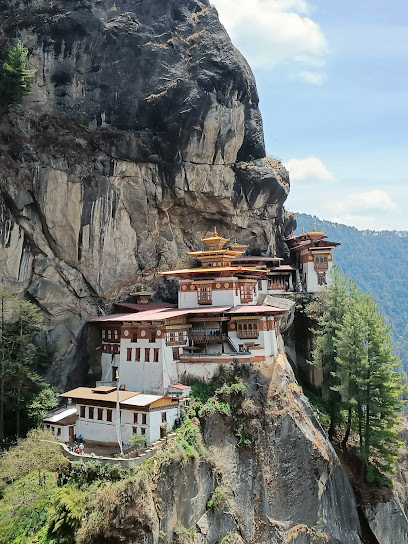
Punakha Suspension Bridge
Explore the breathtaking Punakha Suspension Bridge, the longest in Bhutan, where stunning views and unique experiences await travelers.

Punakha Dzong སྤུ་ན་ཁ་རྫོང་།
Discover the serene beauty and rich history of Punakha Dzong, a stunning fortress monastery at the heart of Bhutan's cultural heritage.
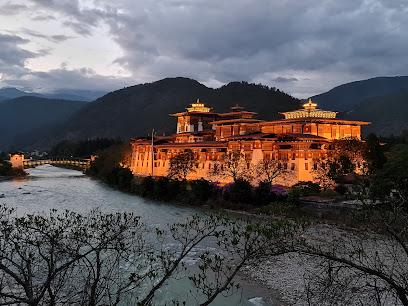
Royal Takin Preserve
Discover the Royal Takin Preserve, a breathtaking nature sanctuary in Bhutan dedicated to the unique Takin and its stunning natural habitat.
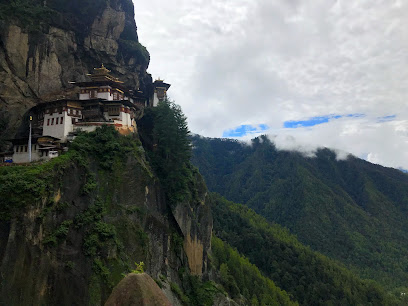
Kyichu Lhakhang སྐྱིད་ཆུ་ལྷ་ཁང་།
Explore the historical and spiritual significance of Kyichu Lhakhang, a stunning Buddhist temple in the heart of Bhutan's Paro Valley.
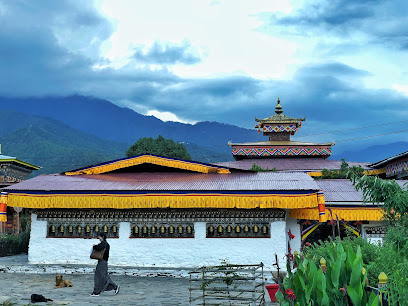
Gangtey Monastery
Visit Gangtey Monastery in Bhutan for a unique blend of spiritual tranquility, stunning architecture, and breathtaking natural beauty.

Kurjey Lhakhang སྐུ་རྗེས་ལྷ་ཁང་།
Explore Kurjey Lhakhang, a serene Buddhist temple in Jakar, Bhutan, known for its stunning architecture and rich spiritual heritage amidst breathtaking landscapes.
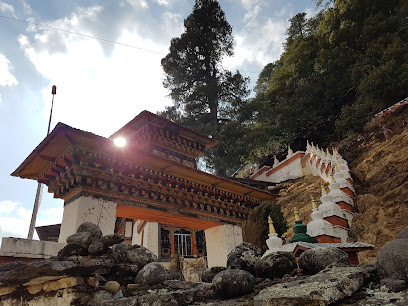
Trongsa Dzong ཀྲོང་གསར་རྫོང།
Explore the stunning Trongsa Dzong, a captivating fusion of history, architecture, and spirituality in the heart of Bhutan.
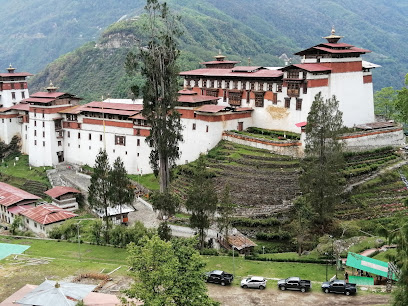
Jamphel Lhakhang བྱམས་་པ་ལྷ་ཁང་།
Explore Jamphel Lhakhang, a tranquil Buddhist temple in Jakar, Bhutan, offering stunning views and rich cultural experiences.
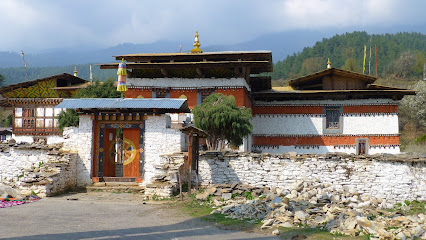
Tamshing Lhakhang གཏམ་ཞིང་ལྷ་ཁང་།
Explore the sacred beauty of Tamshing Lhakhang, a revered Buddhist temple in the heart of Jakar, Bhutan, known for its stunning murals and serene atmosphere.
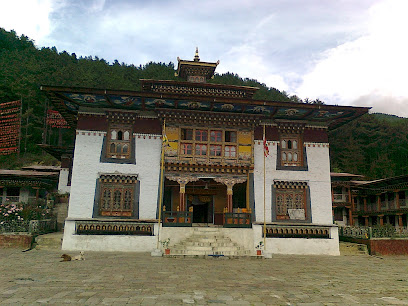
Chendebji Chorten སྤྱན་སྡེབ་སྦྱིས་མཆོད་རྟེན།
Discover the tranquil beauty and spiritual significance of Chendebji Chorten, a stunning Buddhist temple in the heart of Bhutan's majestic landscapes.

Taa-Dzong བལྟ་རྫོང་།
Discover the rich cultural heritage of Bhutan at Taa-Dzong, a heritage museum in Trongsa showcasing the nation's history and artistry.
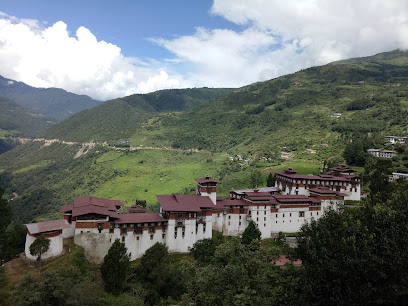
Lhuentse Dzong
Explore Lhuentse Dzong: A historic fortress offering breathtaking views and a deep dive into Bhutan's rich cultural heritage.
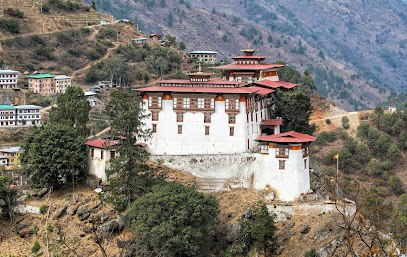
Swiss Guest House Bumthang, Kharsumphe
Discover the perfect blend of Bhutanese charm and modern comfort at Swiss Guest House Bumthang, your ideal base for exploring Bhutan.

Könchogsum Lhakhang དཀོན་མཆོག་གསུམ་ལྷ་ཁང་།
Explore the tranquil beauty of Könchogsum Lhakhang, a sacred Buddhist temple in Jakar, offering rich culture and spiritual serenity.
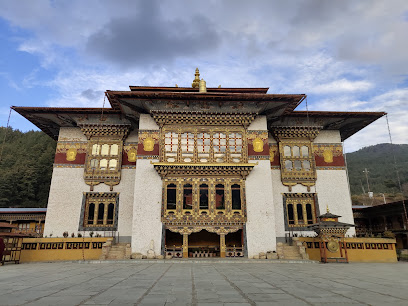
Unmissable attractions to see
Royal Manas National Park
Explore the breathtaking Royal Manas National Park, a UNESCO World Heritage site, where lush landscapes and diverse wildlife await your discovery in Bhutan.
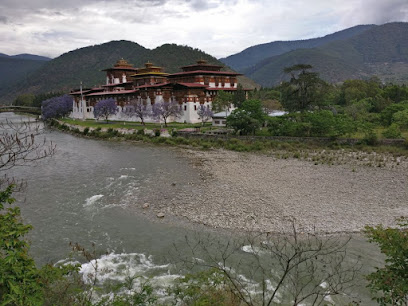
Jakar Dzong བྱ་དཀར་རྫོང་།
Explore Jakar Dzong, a historical fortress in Bhutan's Bumthang Valley, blending rich culture with breathtaking landscapes.
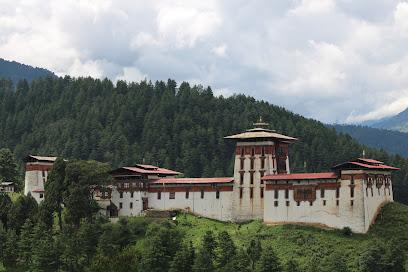
Bubja Waterfall
Experience the serene beauty of Bubja Waterfall, a natural wonder nestled in Bhutan's lush landscapes, perfect for nature lovers and adventurers alike.

Essential places to dine
Ngawang home stay bumthang tamzhing
Discover genuine Bhutanese hospitality at Ngawang Home Stay in Bumthang Tamzhing, where comfort meets cultural immersion.
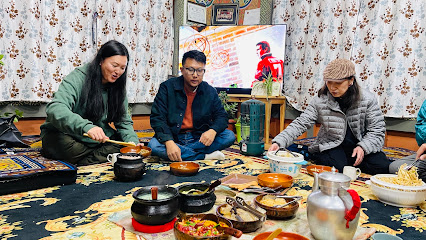
BTCL Guest House
Discover authentic Bhutanese cuisine at BTCL Guest House in Jakar - a cozy retreat that offers both flavor and cultural connection.
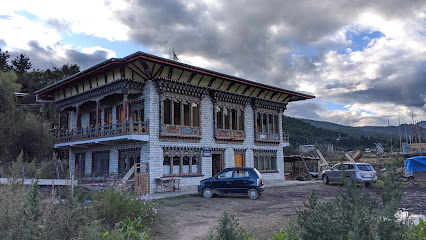
Swiss Guest House Restaurant
Savor authentic Bhutanese flavors blended with Swiss culinary artistry at the enchanting Swiss Guest House Restaurant in Jakar.
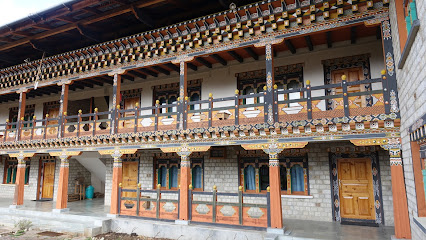
Chef Fast food (CFF) pizza and burger
Savor delicious pizzas and mouth-watering burgers at Chef Fast Food (CFF) in Jakar – your go-to spot for comfort food!

HOTEL YEDZIN WANGYAL
Experience authentic Bhutanese cuisine at Hotel Yedzin Wangyal in Chamkhar Bumthang, where tradition meets taste in a cozy diner setting.
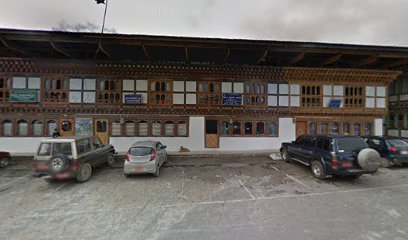
Kuenzang Hotel & Bar
Discover authentic Bhutanese cuisine at Kuenzang Hotel & Bar in Sengor – where every meal tells a story.
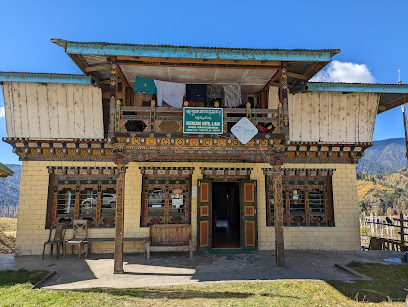
Momo Corner, Bumthang
Discover authentic Bhutanese cuisine at Momo Corner in Bumthang—home of delicious momos and local specialties.
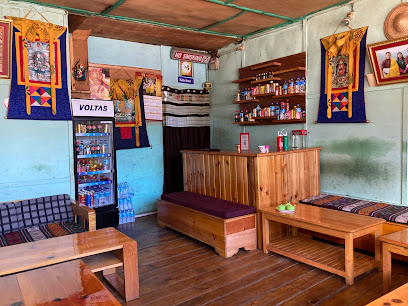
Noryang Resturant ནོར་གཡང་ཟ་ཁང་།
Experience authentic Bhutanese flavors at Noryang Restaurant in Jakar - where every dish tells a story.
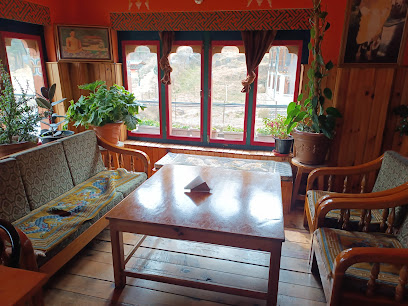
Kharamphay, Tangsibi, Ura, Bumthang
Experience authentic Bhutanese cuisine at Kharamphay in Tangsibi, Ura – where every dish tells a story amidst breathtaking landscapes.
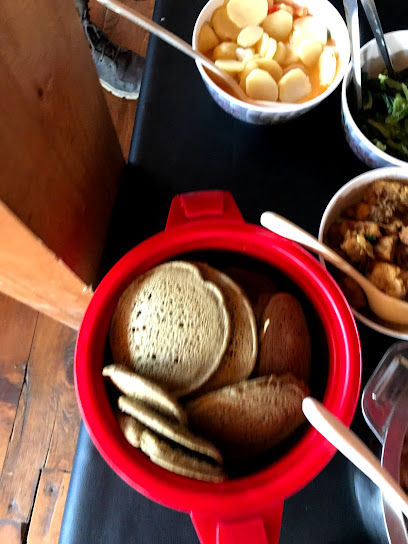
Tashi Gatshel Food and Lodge
Experience authentic Bhutanese cuisine at Tashi Gatshel Food and Lodge in Sengor – where local flavors meet warm hospitality.
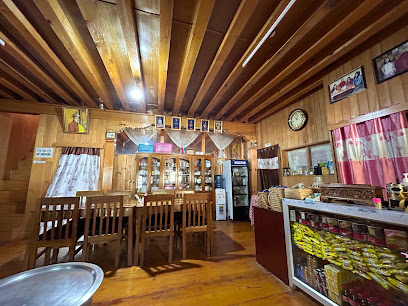
Deki Restaurant (noodles and momos)
Experience authentic Bhutanese flavors at Deki Restaurant in Jakar - home of delicious noodles and momos.
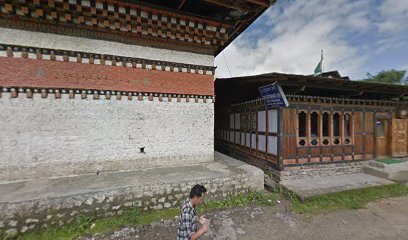
Food Bowl Kitchen
Discover authentic Bhutanese cuisine at Food Bowl Kitchen in Jakar - where every dish tells a story.
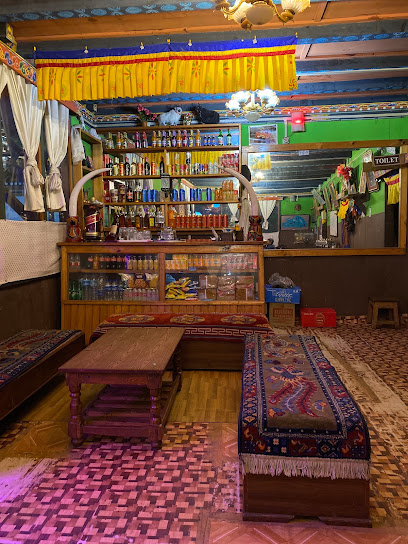
Thukpa Shop
Discover authentic Bhutanese flavors at Thukpa Shop in Jakar—home of the delicious thukpa noodle soup and warm hospitality.
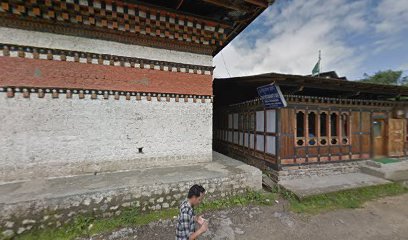
Tashi Cholling lodging
Experience authentic Bhutanese cuisine at Tashi Cholling Lodging in Jakar - where tradition meets comfort amidst breathtaking landscapes.
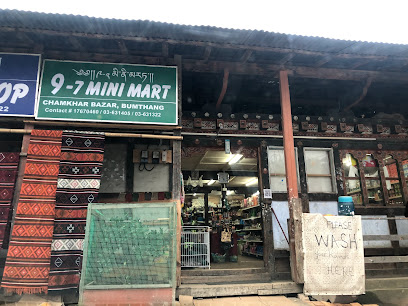
Friends Restaurant & Bar
Experience authentic Bhutanese flavors at Friends Restaurant & Bar in Jakar – where every meal is a celebration of taste and culture.
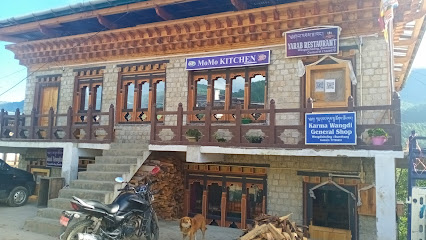
Markets, malls and hidden boutiques
Dhaba &Cafe Bumthang
Discover the authentic flavors of Bhutan at Dhaba & Cafe Bumthang, where coffee meets local culture in a cozy setting.
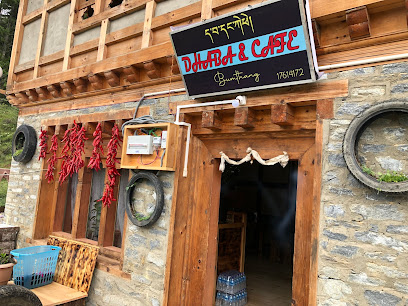
Bumthang Swiss Cheese
Experience the unique flavors of Bumthang Swiss Cheese, a delightful cheese shop in Bhutan offering artisanal cheeses made from local ingredients.
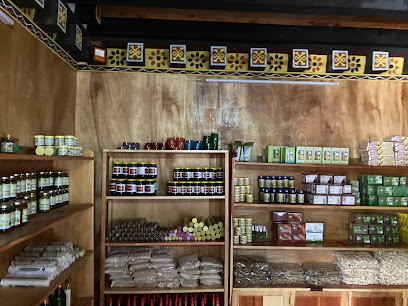
Dungsam shopping
Explore Dungsam Shopping in Rongthang for the latest electronics and unique local products, blending modern technology with Bhutanese craftsmanship.

Bumthang Sports & Gifts Corner
Explore Bumthang Sports & Gifts Corner for unique Bhutanese crafts and souvenirs that embody the spirit of Bhutan's rich cultural heritage.
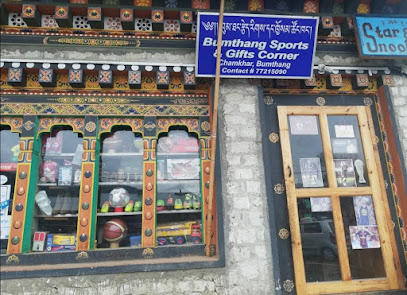
Karchung Tshongkhang
Discover the essence of Bhutanese culture at Karchung Tshongkhang, your go-to general store for traditional crafts and local snacks in Jakar.

Tashi Dendup Electrical Shop
Discover quality hardware and electrical supplies at Tashi Dendup Electrical Shop in Jakar, a reliable local favorite for travelers in Bhutan.
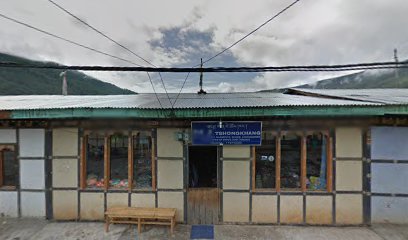
Home Collection
Experience Bhutanese culture at the Home Collection, a charming general store offering unique local goods and warm hospitality.
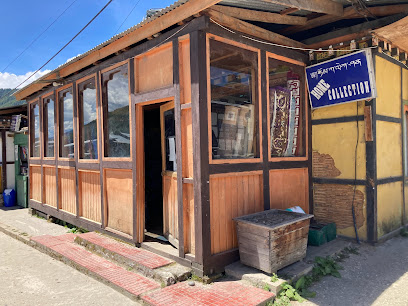
Doro Tshongkhang
Experience the vibrant essence of Bhutanese fashion at Doro Tshongkhang in Jakar, a unique clothing store blending tradition with modern style.
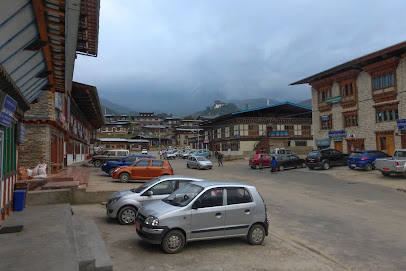
Bumthang Hardware & Electronicals
Explore Bumthang Hardware & Electronicals for all your DIY and electronic needs in the heart of Jakar, Bhutan, ensuring a successful project every time.
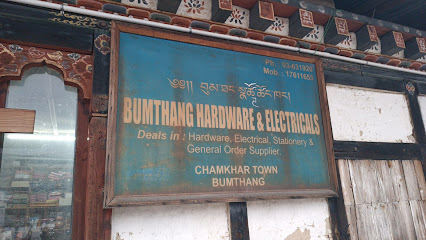
Mangal Vegetable shop
Discover fresh produce and local flavors at Mangal Vegetable Shop, a vibrant market in Jakar, Bhutan, reflecting the region's rich agricultural heritage.
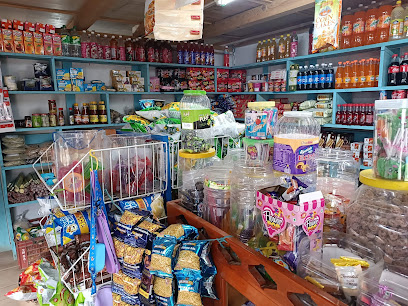
Dee Tshok Tshongkhang
Explore Dee Tshok Tshongkhang in Jakar, Bumthang for unique Bhutanese crafts and home goods that reflect the rich cultural heritage of Bhutan.
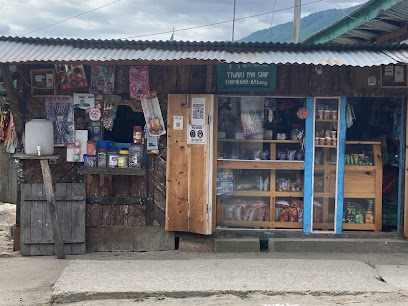
ND Tshongkhang
Discover local treasures and Bhutanese hospitality at ND Tshongkhang, your go-to general store on the Bumthang - Ura Highway.
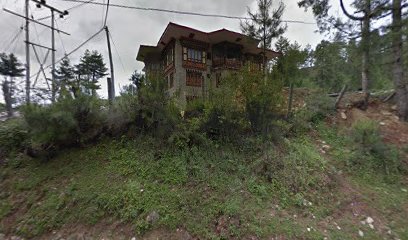
DK General Shop
Explore local culture and find unique souvenirs at DK General Shop in Jakar, your charming general store for all essentials and treasures.
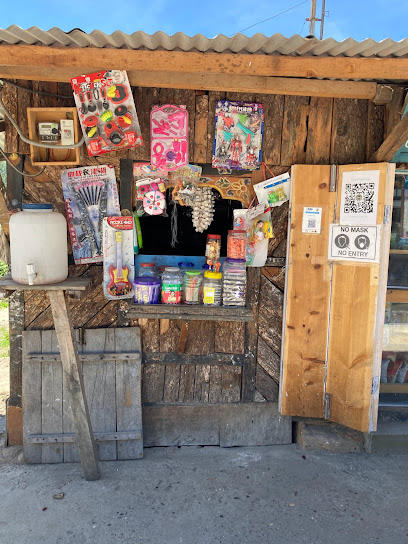
Durga General Shop
Discover the vibrant spirit of Jakar at Durga General Shop, your local destination for authentic Bhutanese crafts and travel essentials.

Phuenam General Shop
Experience the local charm at Phuenam General Shop in Jakar, your one-stop destination for essentials and unique Bhutanese products.

Essential bars & hidden hideouts
Dhaba &Cafe Bumthang
Experience the charm of Dhaba & Cafe Bumthang, where exceptional coffee meets the serene beauty of Bhutan in a cozy atmosphere.

Bumthang Brewery Red Panda Beer
Experience the finest craft beers at Bumthang Brewery Red Panda Beer, nestled in the scenic beauty of Jakar, Bhutan.
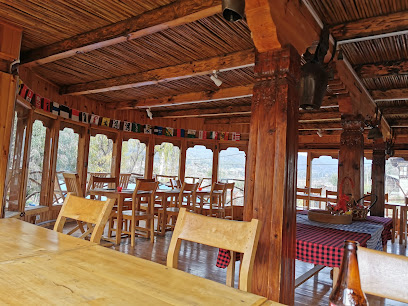
Kuenzang Hotel & Bar
Discover the authentic flavors of Bhutan at Kuenzang Hotel & Bar, a cozy spot for travelers seeking a unique dining experience in Sengor.

Friends Restaurant & Bar
Discover the essence of Bhutanese cuisine at Friends Restaurant & Bar in Jakar, where every meal is a celebration of flavor and hospitality.

Sunshine Bar and Restaurant
Discover the flavors of Bhutan at Sunshine Bar and Restaurant, where every dish tells a story and every visit feels like home.
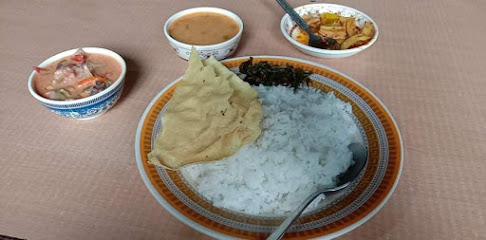
Tenzin Wangmo Bar
Experience the vibrant local culture at Tenzin Wangmo Bar, a cozy spot in Jakar offering a delightful selection of drinks and a warm atmosphere.
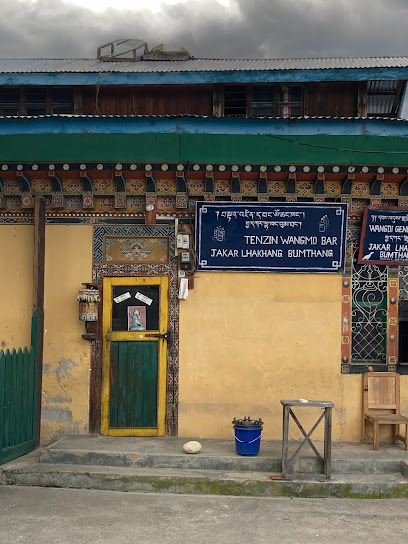
Ura Yurgang
Discover the cozy atmosphere of Ura Yurgang, a charming bar in Ura, Bhutan, where local culture and hospitality meet.
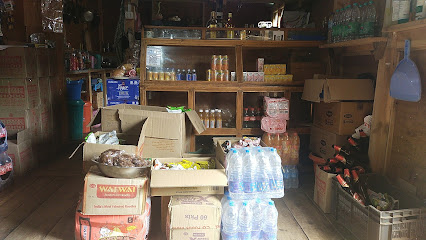
Chechaymo Bar
Experience the vibrant local culture and unwind with delightful drinks at Chechaymo Bar in Jakar, a must-visit for every tourist.

Leki Wangmo Restaurant and Bar
Discover authentic Bhutanese cuisine at Leki Wangmo Restaurant and Bar, a cozy spot in Bumthang with stunning views and a warm atmosphere.
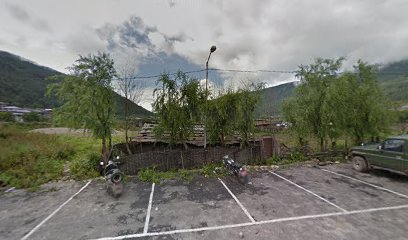
Kuenzang Choden Bar and General Shop
Explore genuine Bhutanese culture at Kuenzang Choden Bar and General Shop, a must-visit stop along the Bumthang-Ura Highway in Jakar.
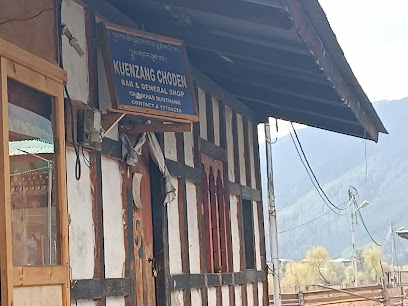
Chimmi Bar & Restaurant
Discover the authentic flavors of Bhutan at Chimmi Bar & Restaurant, a perfect blend of local cuisine and warm hospitality along the Trongsa - Yotongla Highway.
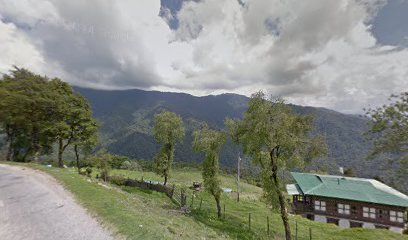
Ugyenling Restaurant and Bar
Experience authentic Bhutanese cuisine at Ugyenling Restaurant and Bar in Jakar, where culture and hospitality blend seamlessly.

Chenzom Bar
Discover the vibrant nightlife at Chenzom Bar in Jakar, where local culture meets refreshing drinks in a lively atmosphere.
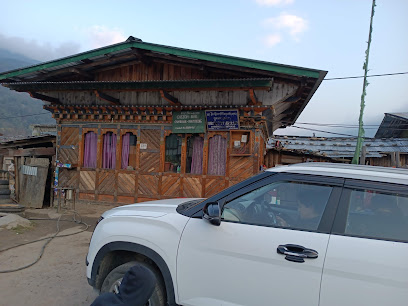
Sonam Yangkhel, Restaurant Cum Bar
Experience authentic Bhutanese cuisine at Sonam Yangkhel, a charming restaurant cum bar in Jakar, perfect for tourists seeking local flavors.

Subba Bar
Experience the vibrant nightlife at Subba Bar in Jakar, where local culture meets a cozy ambiance for unforgettable evenings.
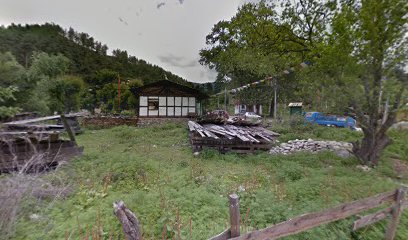
Local Phrases
-
- Helloཇོ གཏོ གཏོ
[jo tto tto] - Goodbyeའཛིན་ལས་བསྐོ
[dzin la ba ko] - Yesཡོད
[yo] - Noམེད
[me] - Please/You're welcomeབསྐོ
[ba ko] - Thank youབདག བཛག
[de kha dzag] - Excuse me/Sorryབདག དགོས
[de go] - How are you?ཁོང་མེད་ཅེ་བར
[khong me che bar] - Fine. And you?ཟླ མེད་བར
[zla me bar] - Do you speak English?ཨིས་ཇེན་ཀོབ ལས་ཨིན
[is jen kob la in] - I don't understandང་མེད་མཚོ
[nga me tso]
- Helloཇོ གཏོ གཏོ
-
- I'd like to see the menu, pleaseམར་མགོན་དབང་གིས་ཨིར་འབར
[mar mgon dang gi ir bar] - I don't eat meatང་མེད་བསམ
[nga me sam] - Cheers!ཨིབ
[ib] - I would like to pay, pleaseམར་རང་ན་ཤར
[mar rang na shar]
- I'd like to see the menu, pleaseམར་མགོན་དབང་གིས་ཨིར་འབར
-
- Help!གཏོར
[tto] - Go away!ལག་འག
[lak ag] - Call the Police!བདག གཏོར
[de tto] - Call a doctor!བདག ལག་འག
[de lak ag] - I'm lostང་སར་ཡོ
[nga sar yo] - I'm illང་ཤི་མ་མེད
[nga shi ma me]
- Help!གཏོར
-
- I'd like to buy...མར་ནིའུ་ཨིར
[mar ni'u ir] - I'm just lookingང་ཀོབ
[nga kob] - How much is it?སེང་གོ་རི་ཁོ
[seng go ri kho] - That's too expensiveབསམ་རང་རི་ཁོ
[sam rang ri kho] - Can you lower the price?སེང་གོ་རི་ཁོ
[seng go ri kho]
- I'd like to buy...མར་ནིའུ་ཨིར
-
- What time is it?ཁོ སྐད་དུ་བེ
[kho skad du be] - It's one o'clockགཤས་རང་གཤས
[gsha rang gsha] - Half past (10)འདུ་ལས་བབར
[du la bar] - Morningཉིནམ
[nyinam] - Afternoonརི་ཉིནམ
[ri nyinam] - Eveningཆད་མ
[ched ma] - Yesterdayཁར་རང་ཡོ
[khar rang yo] - Todayདེར་ཡོ
[der yo] - Tomorrowརང་ཡོ
[rang yo] - 1གཤས
[gsha] - 2མཚོ
[tso] - 3གསུ
[su] - 4མོ
[mo] - 5ལྟ
[la ta] - 6བདྷ
[bha] - 7ཇི
[ji] - 8རང
[rang] - 9ཇིཉ
[ji nyin] - 10བབར
[bar]
- What time is it?ཁོ སྐད་དུ་བེ
-
- Where's a/the...?ཁོང་མཅིག
[khong mchig] - What's the address?ཁོང་མཅིག
[khong mchig] - Can you show me (on the map)?ཁོང་མཅིག
[khong mchig] - When's the next (bus)?ཁོང་མཅིག
[khong mchig] - A ticket (to ....)ཁོང་མཅིག
[khong mchig]
- Where's a/the...?ཁོང་མཅིག
History of Bumthang
-
Bumthang, often referred to as the spiritual heartland of Bhutan, has a history deeply rooted in myths and legends. According to local lore, the valley was once inhabited by powerful spirits and deities. It is said that Guru Rinpoche, the revered Buddhist saint, arrived in Bumthang in the 8th century to subdue these spirits and establish Buddhism. This event marks the beginning of Bumthang's historical and spiritual significance in Bhutan.
-
In the 7th century, the Tibetan King Songtsen Gampo constructed 108 temples across the Himalayas to subdue a giant demoness. Jambay Lhakhang in Bumthang is one of these temples. This ancient monastery is not only a significant religious site but also a testament to the early spread of Buddhism in Bhutan. It remains a cornerstone of Bumthang's cultural and spiritual identity.
-
Kurjey Lhakhang is another vital religious site in Bumthang, linked to Guru Rinpoche's visit in the 8th century. Legend has it that Guru Rinpoche meditated in a cave here, leaving an imprint of his body, hence the name 'Kurjey' which means 'body imprint'. The monastery complex, which now includes three temples, is an essential pilgrimage destination for Buddhists and a key part of Bumthang's historical landscape.
-
Bumthang is intrinsically linked to the Wangchuck dynasty, the royal family of Bhutan. Jakar Dzong, also known as the 'Castle of the White Bird', was constructed in 1549 by the great grandfather of the first Shabdrung, Ngawang Namgyal. This fortress-monastery played a crucial role in the unification of Bhutan and continues to serve as a religious and administrative center in Bumthang.
-
Mebar Tsho, or the Burning Lake, is a sacred site in Bumthang with a fascinating historical narrative. It is here that the famous Terton Pema Lingpa, a treasure revealer, discovered several of Guru Rinpoche's hidden treasures in the 15th century. According to legend, he jumped into the lake with a butter lamp in his hand, and emerged holding the treasures with the lamp still burning. This event solidified Bumthang's reputation as a land of spiritual wonders.
-
The Jambay Lhakhang Drup is one of the most vibrant festivals in Bhutan, held annually at the Jambay Lhakhang monastery. This festival celebrates Guru Rinpoche's arrival in Bhutan and the establishment of Buddhism. It features traditional masked dances, fire rituals, and religious ceremonies. The festival is a profound expression of Bumthang's rich cultural heritage and offers a unique insight into the spiritual life of its people.
Bumthang Essentials
-
Bumthang can be reached by air and road. The nearest airport is Bathpalathang Airport, which has domestic flights from Paro and Gelephu. International travelers typically fly into Paro International Airport and then take a domestic flight or drive to Bumthang. By road, Bumthang is accessible via the national highway from Thimphu, the capital, which is approximately 268 kilometers away. The journey by road can take around 8 to 10 hours due to the mountainous terrain.
-
Within Bumthang, local transportation options include taxis and hired cars. Buses operate between major towns and villages in the region. For more flexibility, renting a car with a driver is recommended as it allows for easier navigation through the region's scenic but challenging roads. Cycling is also an option for those looking to explore the area at a leisurely pace.
-
The official currency of Bhutan is the Bhutanese Ngultrum (BTN), which is pegged to the Indian Rupee (INR). Credit cards are accepted in some hotels and larger establishments, but cash is preferred in most places, especially in rural areas like Bumthang. ATMs are available, but it is advisable to carry sufficient cash when traveling to remote locations.
-
Bumthang is generally a safe destination for tourists, with low crime rates. However, standard precautions should be taken, such as avoiding isolated areas at night and safeguarding personal belongings. Always stay vigilant and aware of your surroundings. There are no specific high-crime areas targeting tourists in Bumthang.
-
In case of emergency, dial 113 for police assistance and 112 for medical emergencies. Bumthang has a district hospital and several health clinics that offer medical services. It is recommended to have travel insurance that covers medical emergencies. For minor health issues, pharmacies are available where you can purchase over-the-counter medications.
-
Fashion: Do dress modestly, especially when visiting religious sites. Avoid wearing revealing clothing. Religion: Do respect local customs and traditions. Always remove your shoes and cover your head when entering temples and monasteries. Public Transport: Do be polite and offer your seat to elderly passengers. Don’t eat or drink on public transport. Greetings: Do greet people with a slight bow and the traditional 'Kuzu Zangpo' (hello). Eating & Drinking: Do try local delicacies and accept food offerings graciously. Don’t refuse hospitality, as it is considered impolite.
-
To experience Bumthang like a local, visit the local markets where you can buy fresh produce, traditional handicrafts, and textiles. Engage with locals, as they are often friendly and willing to share stories about their culture and history. Don’t miss festivals like Jambay Lhakhang Drup and Ura Yakchoe, which offer a glimpse into the region’s rich cultural heritage. Also, explore the numerous monasteries and temples, such as Kurje Lhakhang and Tamshing Lhakhang, to gain a deeper understanding of Bhutanese spirituality.
Trending Landmark in Bumthang
-
Paro Taktsang
-
Punakha Suspension Bridge
-
Punakha Dzong སྤུ་ན་ཁ་རྫོང་།
-
Royal Takin Preserve
-
Kyichu Lhakhang སྐྱིད་ཆུ་ལྷ་ཁང་།
-
Gangtey Monastery
-
Kurjey Lhakhang སྐུ་རྗེས་ལྷ་ཁང་།
-
Trongsa Dzong ཀྲོང་གསར་རྫོང།
-
Jamphel Lhakhang བྱམས་་པ་ལྷ་ཁང་།
-
Tamshing Lhakhang གཏམ་ཞིང་ལྷ་ཁང་།
-
Chendebji Chorten སྤྱན་སྡེབ་སྦྱིས་མཆོད་རྟེན།
-
Taa-Dzong བལྟ་རྫོང་།
-
Lhuentse Dzong
-
Swiss Guest House Bumthang, Kharsumphe
-
Könchogsum Lhakhang དཀོན་མཆོག་གསུམ་ལྷ་ཁང་།
Nearby Cities to Bumthang
-
Things To Do in Jakar
-
Things To Do in Trongsa
-
Things To Do in Mongar
-
Things To Do in Wangdue Phodrang
-
Things To Do in Punakha
-
Things To Do in Trashigang
-
Things To Do in Thimphu
-
Things To Do in Paro
-
Things To Do in Phuentsholing
-
Things To Do in Guwahati
-
Things To Do in Gangtok
-
Things To Do in Darjeeling
-
Things To Do in Siliguri
-
Things To Do in Rangpur
-
Things To Do in Shillong











